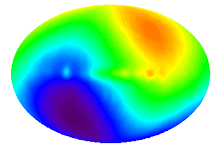Cancer Genetics and Epigenetics Two Sides of the Same Coin
Cancer Cell, Volume 22, Issue 1, 9-20, 10 July 2012
Epigenetic and genetic alterations have long been thought of as two separate mechanisms participating in carcinogenesis. A recent outcome of whole exome sequencing of thousands of human cancers has been the unexpected discovery of many inactivating mutations in genes that control the epigenome. These mutations have the potential to disrupt DNA methylation patterns, histone modifications, and nucleosome positioning and hence, gene expression. Genetic alteration of the epigenome therefore contributes to cancer just as epigenetic process can cause point mutations and disable DNA repair functions. This crosstalk between the genome and the epigenome offers new possibilities for therapy.
Epigenetic mechanisms help establish cellular identities, and failure of the proper preservation of epigenetic marks can result in inappropriate activation or inhibition of various cellular signaling pathways leading to cancer. It is now generally accepted that human cancer cells harbor global epigenetic abnormalities and that epigenetic alterations may be the key to initiating tumorigenesis.
The cancer epigenome is characterized by substantial changes in various epigenetic regulatory layers; herein, we introduce some important examples of epigenetic disruptions that cause mutation of key genes and/or alteration of signaling pathways in cancer development.
Promoter hypermethylation of classic tumor suppressor genes is commonly observed in cancers, a phenomenon that has been implicated with driving tumorigenesis.
The mutation of epigenetic modifiers presumably leads to profound epigenetic changes, including aberrant DNA methylation, histone modifications, and nucleosome positioning, although this remains to be demonstrated. These epigenetic alterations can lead to abnormal gene expression and genomic instability, which may predispose to cancer.
Nucleosomes, which are the basic building blocks of chromatin, contain DNA wrapped around histones.
Histones are regulators of chromatin dynamics either by changing chromatic structure by altering electrostatic charge or providing protein recognition sites by specific modifications.
Histone modifications at specific residues characterize genomic regulatory regions, such as active promoter regions which are enriched in trimethylated H3 at lysine 4 (H3K4me3), inactive promoters which are enriched in trimethylated H3 at lysine 27 (H3K27me3) or trimethylated H3 at lysine 9 (H3K9me3), and regulatory enhancers that are enriched in monomethylated H3 at lysine 4 (H3K4me1) and/or acetylated H3 at lysine 27 (H3K 27ac ).
These histone modification patterns are regulated by enzymes including histone acetyltransferases (HATs) and deacetylases (HDACs), which introduce and remove acetyl groups, respectively. Histone methyltransferases (HMTs) and demethylases (HDMs), on the other hand, introduce and remove methyl groups. During tumorigenesis, cells undergo global changes in histone modifications and in the distribution of histone variants such as H 2A .Z which may affect the recruitment of TFs and often components of the transcription machinery, thereby contributing to aberrant gene expression.
An increasing number of nucleoside analogs/small molecules are being studied as anti-cancer drugs. Inhibitiors of DNMTs 5-azacytidine (5-Aza-CR; Vidaza; azacitidine) and 5-Aza-2-deoxycytidine (5-Aza-CdR; Dacogen; decitabine) or HDACs by SAHA or Rhomidepsin have been approved for cancer treatment by the FDA and proven to have therapeutic efficacy in a variety of malignancies
The presence of multiple genetic and epigenetic aberrations within a cancer suggests that effective cancer therapies will be most beneficial when combined with epigenetic and/or other anti-cancer strategies such as standard chemotherapy.
Cancer Cell, Volume 22, Issue 1, 9-20, 10 July 2012

沒有留言:
張貼留言